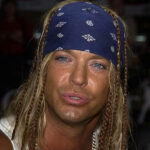Subject: Lava Lamp Plans Here.
Date: 13 Jan 1995 08:08:15 GMT
I’ve had SEVERAL requests for the plans, so here they are.
Sorry, I guess I lost the name of the guy who gave ’em to me.
(I recieved two versions, and I liked this one best).
WARNING!! This electronic document deals with and involves subject matter
and the use of materials and substances that may be hazardous to health
and life. Do not attempt to implement or use the information contained
herein unless you are experienced and skilled with respect to such subject
matter, materials and substances. The author makes no representations as
for the completeness or the accuracy of the information contained herein
and disclaim any liability for damages or injuries, whether caused by or
arising from the lack of completeness, inaccuracies of the information,
misinterpretation of the directions, misapplication of the information or
otherwise.
Please note: The information contained in this electronic document can
be found in the 1992 Edition of Popular Electronics Electronics Hobbyists
handbook, published annually by Gernsback Publications Inc, USA.
Inside a lava lamp are two immiscible fluids. If it is assumed that fluid 1
is water, then fluid 2 must be:
.1) insoluble in water;
.2) heavier than water;
.3) non-flammable (for safety);
.4) non-reactive with water or air;
.5) more viscous than water;
.6) reasonably priced.
Furthermore, fluid 2 must not be:
.1) very poisonous (for safety);
.2) chlorinated;
.3) emulsifiable in water (for rapid separation).
In addition, fluid 2 must have a greater coefficient of expansion than
water. Check a Perry’s handbook of Chemical Engineering, and the above
list eliminates quite a few possibilities.
Here is a list of possible chemicals to use:
.1) benzyl alcohol (sp.g. 1.043, bp 204.7 deg. C, sl. soluble);
.2) cinnamyl alcohol (sp. g. 1.04, bp 257.5 deg. C, sl. soluble);
.3) diethyl phthalate (sp. g. 1.121, bp 298 deg. C, insoluble);
.4) ethyl salicylate (sp. g. 113, bp 233 deg. C, insoluble).
If desired, use a suitable red oil-soluble dye to color fluid 2. A
permanent felt-tip pen is a possible source. Break open the pen and put
the felt in a beaker with fluid 2.
It is recommended to use benzyl alcohol as fluid 2. (Caution!! Do not
come into contact with benzyl alcohol either by ingestion, skin, or
inhalation.) In addition to water, the following items will be necessary:
.1) sodium chloride (table salt);
.2) a clear glass bottle, about 10 inches (25.4 cm) high;
.3) a 40 watt light bulb and ceramic light fixture;
.4) a 1 pint (473 ml) tin can or larger;
.5) plywood;
.6) 1/4 inch (0.635 cm) thick foam-rubber;
.7) AC plug with 16 gauge lamp wire;
.8) hardware;
.9) light dimmer (optional);
.10) small fan (optional).
The performance of the lava lamp will depend on the quality of the water
used. A few experiments must be conducted to determine how much sodium
chloride is necessary to increase the water’s specific gravity. Try a 5%
salt concentration first (50 g of salt to 1 liter of water). Pour the
red-dyed benzyl alcohol mixture in a Pyrex beaker. Add an equal or
greater amount of water and heat slowly on a hot plate. If the benzyl
alcohol floats to the top and stays there, decrease the salt
concentration. If it stays at the bottom, add more salt.
Construct the lamp by fastening the ceramic lamp fixture to a 5 inch (12.7
cm) diameter piece of plywood. Attach the lamp wire to the fixture.
Screw in the 40 watt bulb. Cut one end off the tin can, remove its
contents, and clean thoroughly. Drill a hole in the tin can for the wire
to go through. Invert the can over the bulb (open end down) and affix to
the plywood with epoxy. Cut a round gasket from the foam-rubber and fit
it into the top lip of the can.
Fill the bottle partially with brine, add about 150 ml of benzyl alcohol,
then fill up the bottle with brine. Leave about 1 inch (2.54 cm) of
airspace on top for expansion. Bubble size will be influenced by amount
of air space. Tightly cap the bottle and place on gasket.
The light dimmer is used to control the amount of heat in the bottle. It
is helpful if the bottle is too short and the 40 watt bulb makes the
benzyl alcohol accumulate at the top.
The fan can also be used to cool the top of the bottle and help the benzyl
alcohol to sink to the bottom.
If desired, add a trace of an antioxidant such as BHA or BHT to the brine
to add color and contrast.
Enjoy and good luck.
